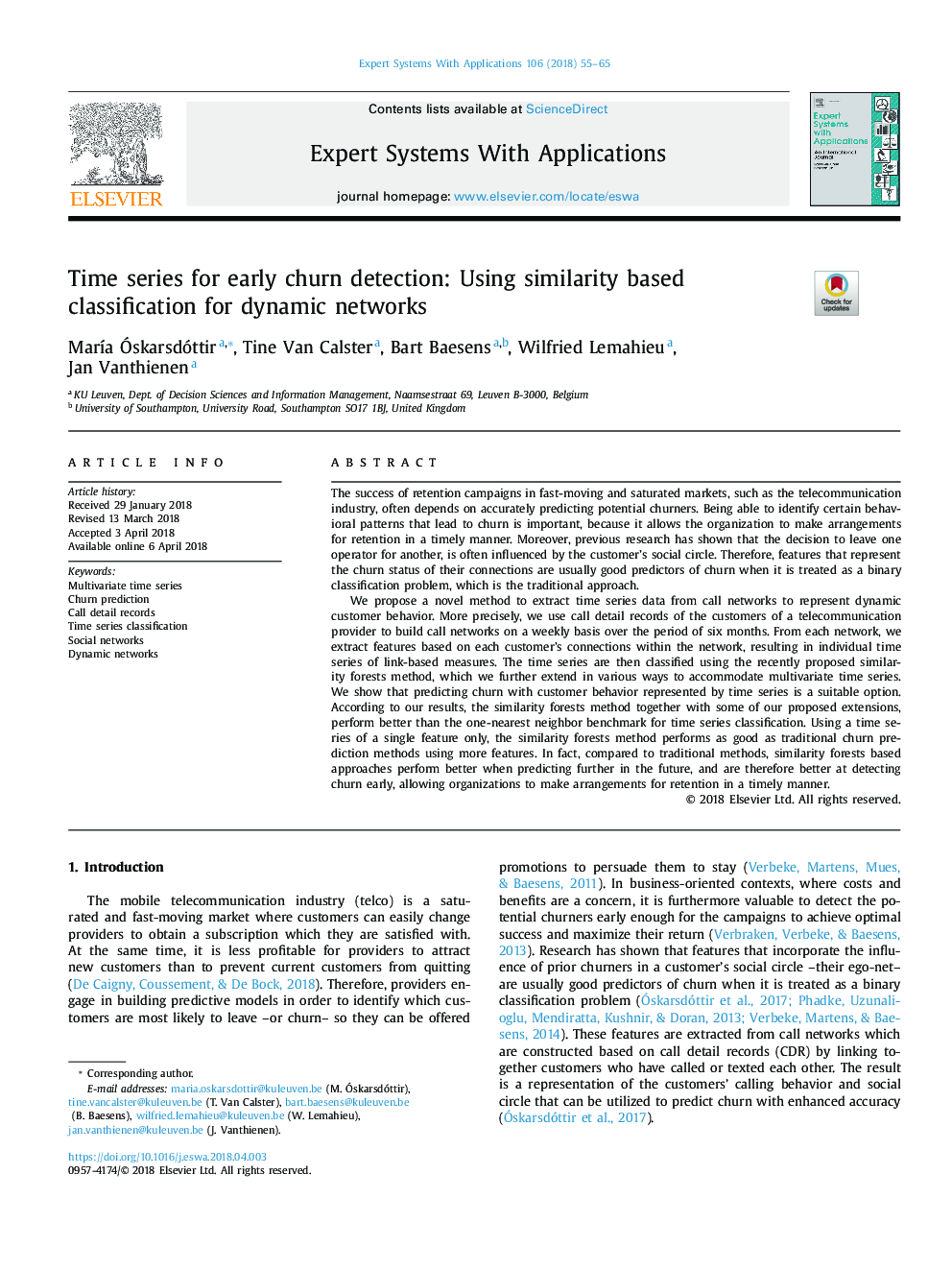| Article ID | Journal | Published Year | Pages | File Type |
|---|---|---|---|---|
| 6854918 | Expert Systems with Applications | 2018 | 11 Pages |
Abstract
We propose a novel method to extract time series data from call networks to represent dynamic customer behavior. More precisely, we use call detail records of the customers of a telecommunication provider to build call networks on a weekly basis over the period of six months. From each network, we extract features based on each customer's connections within the network, resulting in individual time series of link-based measures. The time series are then classified using the recently proposed similarity forests method, which we further extend in various ways to accommodate multivariate time series. We show that predicting churn with customer behavior represented by time series is a suitable option. According to our results, the similarity forests method together with some of our proposed extensions, perform better than the one-nearest neighbor benchmark for time series classification. Using a time series of a single feature only, the similarity forests method performs as good as traditional churn prediction methods using more features. In fact, compared to traditional methods, similarity forests based approaches perform better when predicting further in the future, and are therefore better at detecting churn early, allowing organizations to make arrangements for retention in a timely manner.
Keywords
Related Topics
Physical Sciences and Engineering
Computer Science
Artificial Intelligence
Authors
MarÃa Ãskarsdóttir, Tine Van Calster, Bart Baesens, Wilfried Lemahieu, Jan Vanthienen,
